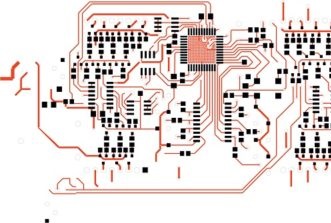This website uses cookies so that we can provide you with the best user experience possible. Cookie information is stored in your browser and performs functions such as recognising you when you return to our website and helping our team to understand which sections of the website you find most interesting and useful.
FPGA Bitstream
22/02/2021, hardwarebee
What is FPGA Bitstream?
A bitstream is a binary sequence that comprises a sequence of bits. These are used in FPGA applications for programming purposes and to establish communication channels.
FPGA bitstream is a file containing the programming data associated with your FPGA chip. It is a file containing binary data that codes for all of the configuration information of a given FPGA. Not only that, but it also has the commands needed to control the functionality of the chip. All of this information is arranged in frames which make up the fundamental blocks for the FPGA configuration memory space. The bitstream file is generated after an elaborate process that comprises a lot of designing, synthesis, and validation.
Full vs. Partial FPGA Bitstreams
Bitstreams can be classified as either full or partial. A full bitstream typically comprises the entire configuration memory of a given device. This kind of bitstream is often used to define the initial state of the configuration memory or for the purposes of executing a static design. It is also used at the start of dynamic reconfiguration systems.
Understandably, a partial bitstream only configures a part of the device’s full configuration. They are frequently used for partial reconfiguration purposes. Partial reconfiguration is a concept that is applied in devices that are using multiple designs or that change portions of their design frequently. Partial reconfiguration gives the user the capability to change some part of the design without having to edit and modify the whole device. This means that when you load a partial bitstream onto the FPGA, you are only reconfiguring a specific area of the device. The rest of the device will remain as is.
Programming an FPGA with Bitstream
When you say you are programming an FPGA, you are essentially describing the process of loading the bitstream onto the chip. The bitstream is typically loaded onto the non volatile memory so that the hardware can program the FPGA when it is turned on.
Security Concerns Associated with FPGA Bitstreams
One of the major benefits of FPGAs is that it can be programmed on the go. However, the flexibility it provides in this regard is countered by the security concerns it poses. When bitstreams are being processed on FPGAs during field updates, there is a risk that the device may accept and execute unauthorized code unless certain security measures are employed and closely monitored.
Several approaches have been suggested and implemented to mitigate these security concerns, including encryption and authentication. While encryption helps preserve the confidentiality of the bitstream, it still does not completely prevent the risk of the data being transmitted over an insecure channel.
Authentication, on the other hand, ensures the integrity of not only the data itself, but also of the source that is transmitting it. It helps make communication more secure by eliminating falsified information. By authenticating the source, the FPGA ensures that the code it is about to run has been written by a trusted programmer and that it has not been altered.










